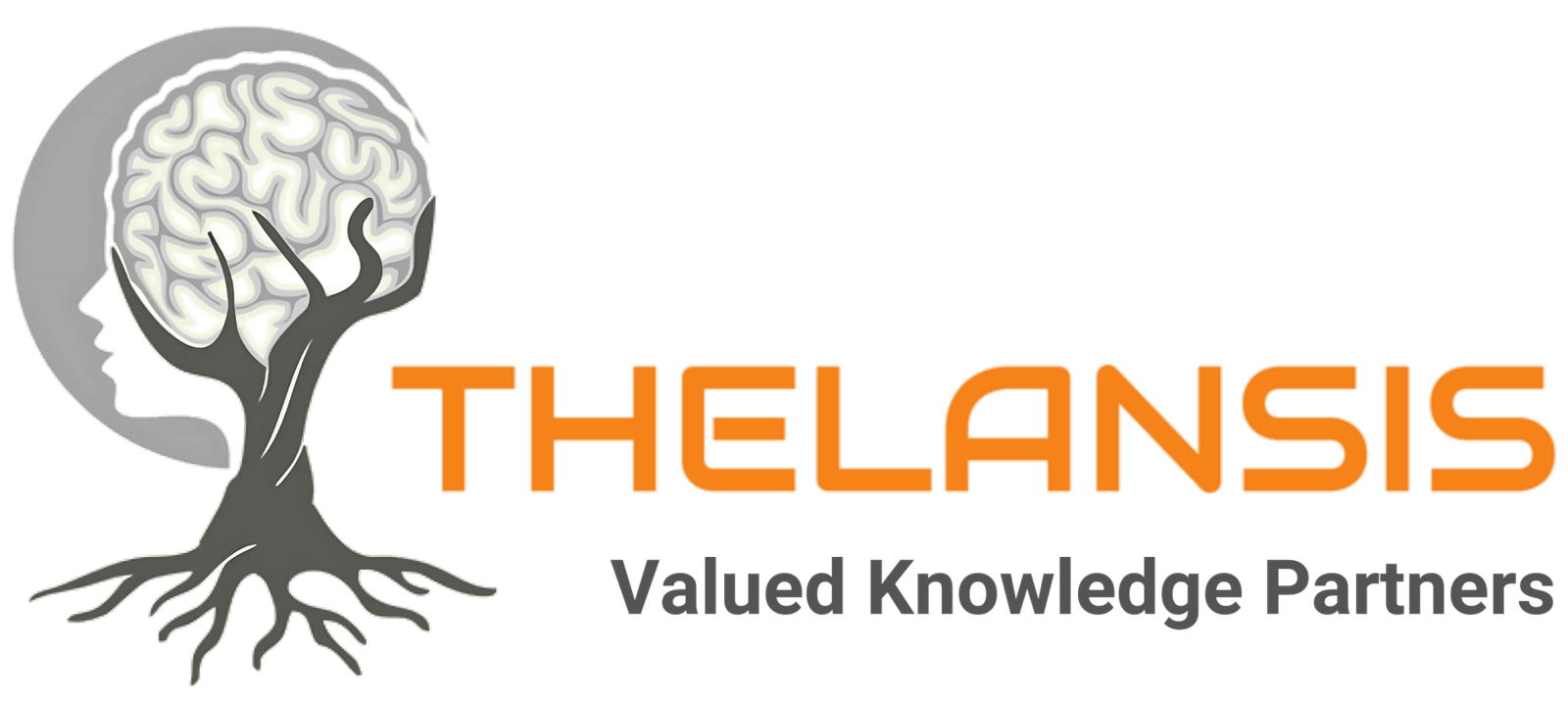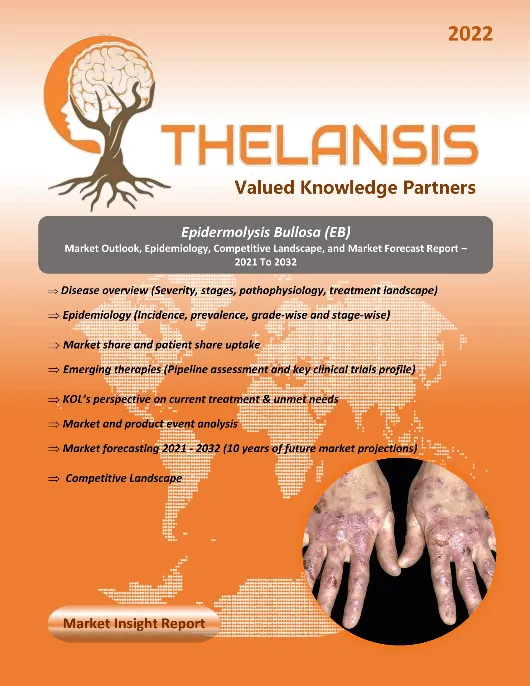Follicular Lymphoma (FL) – Epidemiology Insights and Forecast Report – 2020 To 2040
- Published Date : November 29, 2024
- Updated On : September 7, 2025
- Pages : 52
Follicular Lymphoma (FL) Epidemiology Insights
Thelansis’s “Follicular Lymphoma (FL) Epidemiology Insights and Forecast Report – 2020 To 2040″ provides an analysis of disease burden, characterized by disease definition, prevalence, incidence, diagnosed cases, severity, comorbidities, and clinical manifestations. Potential patient flow dynamics in disease burden are driven by shifts in demographic indicators and their correlation with age and gender distribution over time. Changes in the reported cases and long-term survival of patients may depend on diet, lifestyle, comorbid conditions, and the availability of interventions or therapies.
Follicular Lymphoma (FL) Overview
Follicular lymphoma, accounting for approximately 20–30% of all non-Hodgkin lymphomas, is the most common subtype of indolent (low-grade) B-cell lymphoma. It arises from germinal center B cells and is typically identified histologically by neoplastic follicles that disrupt normal lymph node architecture, with tumor cells arranged in circular or clustered patterns. The underlying cause remains unknown, and there is no evidence implicating infectious agents, making the disease non-contagious. More than 90% of cases express CD20, a surface antigen that enables targeted treatment with anti-CD20 monoclonal antibodies such as rituximab. Prognosis and risk assessment are guided by the FLIPI2 (Follicular Lymphoma International Prognostic Index 2), which incorporates clinical parameters including elevated beta-2 microglobulin, bone marrow involvement, hemoglobin levels below 12 g/dL, lymph node diameter exceeding 6 cm, and age over 60. Based on these factors, five-year progression-free survival rates vary significantly: low-risk patients (0 factors) have an 80% survival rate, intermediate-risk (1–2 factors) around 51%, and high-risk (3–5 factors) only 19%. Treatment decisions depend on disease stage, symptom burden, and risk profile, ranging from watchful waiting in asymptomatic cases to immunochemotherapy or targeted agents in advanced disease.
Geography coverage:
G8 (United States, EU5 [France, Germany, Italy, Spain, U.K.], Japan, and China)
Deliverables format and updates*:
- Access to an interactive epidemiology platform with downloadable Excel and PPT files.
- Global findings
- G8 findings
- Regional findings
- Country-specific findings
- Others*: regular updates, customizations, epidemiologist support
*As per Thelansis’s policy, we ensure that we include all the recent updates before releasing the content. Countries, subpopulations, and years of forecast can be customized as per client requirements.
Key business questions answered:
- 20-year historical and forecast data (2020–2040)
- Disease definition based on globally accepted and latest criteria (e.g., ICD-10 codes)
- Granular patient population coverage by year and geography
- Detailed segmentation by age, gender, subpopulations, comorbidities, line of therapies, etc.
- Patient funnels
- Country comparisons
- Relevant clinical variables (e.g., staging/classification/severity)
Insights driven by robust research and estimates:
- Published literature (e.g., peer-reviewed journal articles, registries, national surveys)
- Primary market research with KOLs
- RWD analysis using claims and EHR datasets
- Proprietary mathematical models (e.g., incidence-survival model; incidence- recurrence/progression-survival model)
Follicular Lymphoma (FL) Epidemiology Insights
Thelansis’s “Follicular Lymphoma (FL) Epidemiology Insights and Forecast Report – 2020 To 2040″ provides an analysis of disease burden, characterized by disease definition, prevalence, incidence, diagnosed cases, severity, comorbidities, and clinical manifestations. Potential patient flow dynamics in disease burden are driven by shifts in demographic indicators and their correlation with age and gender distribution over time. Changes in the reported cases and long-term survival of patients may depend on diet, lifestyle, comorbid conditions, and the availability of interventions or therapies.
Follicular Lymphoma (FL) Overview
Follicular lymphoma, accounting for approximately 20–30% of all non-Hodgkin lymphomas, is the most common subtype of indolent (low-grade) B-cell lymphoma. It arises from germinal center B cells and is typically identified histologically by neoplastic follicles that disrupt normal lymph node architecture, with tumor cells arranged in circular or clustered patterns. The underlying cause remains unknown, and there is no evidence implicating infectious agents, making the disease non-contagious. More than 90% of cases express CD20, a surface antigen that enables targeted treatment with anti-CD20 monoclonal antibodies such as rituximab. Prognosis and risk assessment are guided by the FLIPI2 (Follicular Lymphoma International Prognostic Index 2), which incorporates clinical parameters including elevated beta-2 microglobulin, bone marrow involvement, hemoglobin levels below 12 g/dL, lymph node diameter exceeding 6 cm, and age over 60. Based on these factors, five-year progression-free survival rates vary significantly: low-risk patients (0 factors) have an 80% survival rate, intermediate-risk (1–2 factors) around 51%, and high-risk (3–5 factors) only 19%. Treatment decisions depend on disease stage, symptom burden, and risk profile, ranging from watchful waiting in asymptomatic cases to immunochemotherapy or targeted agents in advanced disease.
Geography coverage:
G8 (United States, EU5 [France, Germany, Italy, Spain, U.K.], Japan, and China)
Deliverables format and updates*:
- Access to an interactive epidemiology platform with downloadable Excel and PPT files.
- Global findings
- G8 findings
- Regional findings
- Country-specific findings
- Others*: regular updates, customizations, epidemiologist support
*As per Thelansis’s policy, we ensure that we include all the recent updates before releasing the content. Countries, subpopulations, and years of forecast can be customized as per client requirements.
Key business questions answered:
- 20-year historical and forecast data (2020–2040)
- Disease definition based on globally accepted and latest criteria (e.g., ICD-10 codes)
- Granular patient population coverage by year and geography
- Detailed segmentation by age, gender, subpopulations, comorbidities, line of therapies, etc.
- Patient funnels
- Country comparisons
- Relevant clinical variables (e.g., staging/classification/severity)
Insights driven by robust research and estimates:
- Published literature (e.g., peer-reviewed journal articles, registries, national surveys)
- Primary market research with KOLs
- RWD analysis using claims and EHR datasets
- Proprietary mathematical models (e.g., incidence-survival model; incidence- recurrence/progression-survival model)
1. Key Findings and Analyst Commentary
- Key trends: market snapshots, SWOT analysis, commercial benefits and risk,etc.
2. Disease Context
- Disease definition, classification, etiology and pathophysiology, drug targets,etc.
3. Epidemiology
- Key takeaways
- Incidence / Prevalence
- Diagnosed and Drug-Treated populations
- Comorbidities
- Other relevant patient segments
4. Market Size and Forecast
- Key takeaways
- Market drivers and constraints
- Drug-class specific trends
- Country-specific trends
5. Competitive Landscape
- Current therapies
- Key takeaways
- Dx and Tx journey/algorithm
- Key current therapies – profiles and KOL insights
- Emerging therapies
- Key takeaways
- Notable late-phase emerging therapies – profiles, launch expectations, KOL insights
- Notable early-phase pipeline
6. Unmet Need and TPP Analysis
- Top unmet needs and future attainment by emerging therapies
- TPP analysis and KOL expectations
7. Regulatory and Reimbursement Environments (by country and payer insights)
8. Appendix (e.g., bibliography, methodology)
Table of contents (TOC)
1. Key Findings and Analyst Commentary
- Key trends: market snapshots, SWOT analysis, commercial benefits and risk,etc.
2. Disease Context
- Disease definition, classification, etiology and pathophysiology, drug targets,etc.
3. Epidemiology
- Key takeaways
- Incidence / Prevalence
- Diagnosed and Drug-Treated populations
- Comorbidities
- Other relevant patient segments
4. Market Size and Forecast
- Key takeaways
- Market drivers and constraints
- Drug-class specific trends
- Country-specific trends
5. Competitive Landscape
- Current therapies
- Key takeaways
- Dx and Tx journey/algorithm
- Key current therapies – profiles and KOL insights
- Emerging therapies
- Key takeaways
- Notable late-phase emerging therapies – profiles, launch expectations, KOL insights
- Notable early-phase pipeline
6. Unmet Need and TPP Analysis
- Top unmet needs and future attainment by emerging therapies
- TPP analysis and KOL expectations
7. Regulatory and Reimbursement Environments (by country and payer insights)
8. Appendix (e.g., bibliography, methodology)


